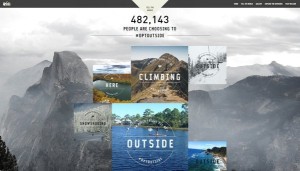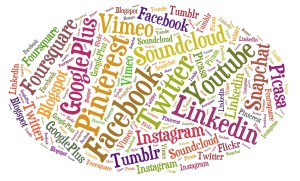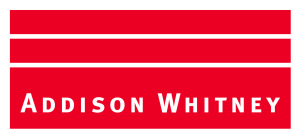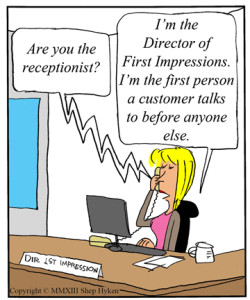Making Brand Decisions that Help Your Branding
The days following Thanksgiving hold the title as some of the busiest of the year for shoppers. There are millions of looking to purchase and billions of dollars being spent. For some brands, this year was different – instead of focusing on sales or discounts, they found the opportunity to make brand statements bigger than what they have on sale.
A number of big brands, including T.J. Maxx, Marshall’s, HomeGoods, DSW, Apple, Nordstrom and Sam’s Club, bucked the trend of opening their doors on Thanksgiving evening, making a point to emphasis their brands’ importance on valuing time with family. Of these, one brand’s strategy to tie the decision back to their brand attributes made it stand out among this group.
REI took the holiday weekend to make a big statement about their brand– closing their doors on both Thanksgiving Day and Black Friday.
They encouraged their would-be-shoppers to “Opt Outside,” in alignment with the brand’s equity in adventure. REI wanted to show a different way to spend the weekend, encouraging potential shoppers to enjoy the great outdoors, a concept that fits in line with their overall brand strategy.
 This branding effort took many forms beyond the initial announcement. For instance, REI made a website available where over 1 million people posted pictures of their outdoor adventure and created the hashtag #OptOutside to further encourage sharing their . The CEO of the company wrote a heart-felt message to shoppers and employees about the company’s values and the brand’s stance on enjoying the outdoors, including the line “a life outdoors is a life well lived.” Again, their messaging and strategies showed consumers that the REI brand is a lifestyle, and goes beyond their name and logo.
This branding effort took many forms beyond the initial announcement. For instance, REI made a website available where over 1 million people posted pictures of their outdoor adventure and created the hashtag #OptOutside to further encourage sharing their . The CEO of the company wrote a heart-felt message to shoppers and employees about the company’s values and the brand’s stance on enjoying the outdoors, including the line “a life outdoors is a life well lived.” Again, their messaging and strategies showed consumers that the REI brand is a lifestyle, and goes beyond their name and logo.
And while they didn’t process any online orders on Black Friday, customers still shopped on their site - SimilarWeb reported that REI saw a 10 percent increase in online traffic on Thanksgiving, and a 26 percent lift on Black Friday. Did the lift overcome dollars that could have been made in-store? Who knows? But the effect on the brand I believe will be lasting.
The greatest lasting impression may be on the brand’s equity in outdoor adventure. If there were some who questioned the brand’s true passion for the outdoors, that equity was cemented by their bold move on Black Friday.
The decision was a reminder to REI shoppers that the products sold through REI have consistent value and demand a premium. REI isn’t looking to push volume out the door and compromise value perceptions it has built year-round. Not participating in Black Friday, maybe more than anything, says that REI is different. They are a different kind of retailer, one less focused on revenue and more focused on experiences, especially experiences that are in line with their brand.
REI took the unorthodox route in its moves this past weekend, where it chose not to get caught up in the holiday hysteria. In doing so, they reinforced that sometimes what defines our brands and makes a lasting brand difference is not what we choose to do, but what we choose not to do. And the most successful of these brands don't just act in a vacuum - they act with a strategy that ties these decisions back to what their brand stands for, reinforcing the notion that they don't just walk the branding walk, but talk the branding talk.
Image Sources:
https://business.transworld.net/news/why-rei-wont-be-open-on-black-friday
https://newsroom.rei.com/multimedia/photos/holiday-2015/
Addison Whitney is a global branding firm with a passion for building strong brands.
To learn more about Addison Whitney, visit our website at AddisonWhitney.com, or contact us here.
Addison Whitney Health's Vince Budd Featured in PM360 Magazine
Addison Whitney Health Senior Vice President Vince Budd is featured in the latest issue of PM360 Magazine, with another edition of the "Brand Slam" series.
This month's "Brand Slam" article is titled "Get to Know More About Brand Naming." It focuses on the importance of partnering with branding and naming agencies who have an in-depth and extensive knowledge of the latest in branding regulations and trends.
A brief passage from the article is below, and if you'd like to read the entire post, you can find it here.
Get to Know More About Brand Naming
In the pharmaceutical branding world, the only constant is change when it comes to regulation among the global health authorities. Governing bodies from the FDA to Health Canada to EMA are in a continuous adaptation to evolve the process of gaining approval of a drug. These include many factors related to an asset’s development, up to and including the brand naming. And in this situation, knowing what is ahead of you is half the battle.
For instance, Health Canada recently released a new set of regulatory naming requirements for all drugs to be marketed in Canada. This is a big step in a new direction for the agency, and with this new direction comes new challenges for manufacturers developing products.
Therefore, it makes sense for pharmaceutical organizations to look to partner with those who have their finger on the pulse of these directional changes, and who have the processes in place to navigate the rough waters of change.
Addison Whitney is a global branding firm with a passion for building strong brands.
To learn more about Addison Whitney, visit our website at AddisonWhitney.com, or contact us here.
Why Your Brand Needs a Versatile Logo
When working on a brand strategy to develop a new brand or refresh an old one is to create the crucial visual branding element - the logo. A brand's logo is often its calling card, the first impression-maker with an audience and the centerpiece of its visual identity.
In today’s digitally-focused marketplace, a logo will live in and on more platforms that ever before. Logo designs that used to only need to look good on signage and business cards are now asked to translate into countless versions, including mobile websites, online ads, merchandise, etc.
“The more flexible a design is, the more places it can appear, the more people it can reach, and the more impact it has,” says Chris Cureton, Senior Graphic Designer at Addison Whitney.
Because of this, visual branding strategies have shifted to a place where logos must be adaptable to media and the placements to which it will live. As the visual representation of a brand, the logo has high standards for its appearance – the connection is inevitable of how the audience sees the quality of the logo and relates it to the quality of the brand.
Social Media and Digital Platforms are Major Factors
As has been discussed, social media has become one of the forefronts of any good brand strategy, especially in the development of a visual brand. This presents a unique case for designers, as they not only must accommodate the various sizes and shapes for the different social media platforms, but they also much take into consideration how the audience will be seeing the logo. Desktops, phones, tablets – these all present sizing and clarity issues unique to the others, but are necessary for a design to flawlessly adapt to.
“It doesn’t matter if it's on the big screen or on your watch, we want the brand to present a consistent experience,” says Cureton. Consistency is a key factor in building a strong brand, but also one that can be reconfigured in a way when it comes to visual branding and logo design. This is where the rise of secondary logos and partial marks come into play. If a logo just doesn’t look right on an application or medium, the designers must also keep in mind that possibility of using a logo variation, one that still captures the essential brand characteristics but gives a different perspective.
Big or Small, It Still Needs to Work
Not only does a logo need to be visually appealing in different variations, but it needs to look just as good whether it is on a watch face on the side of a billboard. Versatile logos just don't transfer well, but they scale well - big or small, the meaning and visual impact is not lost on these designs.
This has been one of the forces behind the trend to more simplistic logo designs and away from the heavy detail of previous logos. Simple design factors are easily scaled up or down and provide the consistent look that is desired by brands. In another nod to the strength a digitally-focused society, many of these smaller renditions are required due to the ever-shrinking size of the screens we use.
Don't Forget the Basics
An interesting aspect of this need for versatility is with all of the changes, the basic rules of good design have largely remained the same. Trends come and go, and tastes vary, but a quality logo design destined to have a long shelf life will carry many of the same elements today as it would 20 years ago. What has changed is the world around it.
“In a digital world, design must follow stoic principles. Control what you can control, and let go of what you can't,” Cureton summarizes. “There are so many variables to think about; you can't control it all. We have been forced to see that a strong logo design is also a flexible one.”
Addison Whitney is a global branding firm with a passion for building strong brands.
To learn more about Addison Whitney, visit our website at AddisonWhitney.com, or contact us here.
AW in Review – Addison Whitney Brand Salsa Recap 11.13.15
Welcome to a special Friday the 13th edition of "AW in Review", our roundup of our latest brand salsa and Addison Whitney news and posts!
Don’t forget, you can stay up-to-date with everything from Addison Whitney by joining the conversation with us on our social media channels – Twitter, Facebook, LinkedIn and Google+.
Addison Whitney to Host Webinar: Evaluating Your Brand - Are You Due for a Refresh?
Has your company recently experienced change or growth? As companies and products evolve, your name, visual identity and positioning need to evolve as well. Join Addison Whitney for a informative webinar on Wednesday, November 18th entitled:”Evaluating Your Brand: Are You Due for a Refresh? Read More...
AW Employee Spotlight: Where Do You Find Your Inspiration?
In this edition of the AW Spotlight, we wanted to get the insights of four of our amazing team members from our visual branding and verbal branding teams, finding out what gets their creative juices flowing.
We asked them their thoughts on the question: Where do you find inspiration when starting your creative process? Read More...
5 Verbal Branding and Naming Tips to Consider - Brannon Cashion's Clutch Interview Highlights
The research firm Clutch recently interviewed our own Brannon Cashion on the trends and best practices around naming a company. Brannon discussed several topics regarding what businesses should think about when working through the naming process and some trends he’s seen recently in naming.
Building off of Brannon’s thoughts in the interview, we put together a list of five key points to consider when working through the verbal branding and naming process, complete with his thoughts from the interview. Read More...
3 Ways Social Media Can Benefit Your Brand's Image
 How branding and social media interact is a topic that covers a number of different perspectives and points of information, but today we’re going to look at how you can impact and improve your brand’s image online.
How branding and social media interact is a topic that covers a number of different perspectives and points of information, but today we’re going to look at how you can impact and improve your brand’s image online.
Here are three ways that your brand strategy and social media strategy can work together for the benefit of your brand image. Read More...
Addison Whitney is a global branding firm with a passion for building strong brands.
To learn more about Addison Whitney, visit our website at AddisonWhitney.com, or contact us here.
Addison Whitney to Host Webinar: Evaluating Your Brand - Are You Due For A Refresh?
Has your company recently experienced change or growth? As companies and products evolve, your name, visual identity and positioning need to evolve as well.
Join Addison Whitney for a informative webinar on Wednesday, November 18th entitled: "Evaluating Your Brand: Are You Due for a Refresh?
This webinar, hosted by Wendy Jacobs, Vice President of Addison Whitney West, will provide guidance how to evaluate your brand, and know if it's time for a brand refresh. We'll take a look at:
- Understanding when it's time for a brand refresh
- The opportunities it can bring
- How to create successful path to change
About the Speaker:
 As the leader of Addison Whitney’s Seattle office, Wendy works with our clients to drive brand strategy, brand name development, brand identity work and brand measurement efforts.
As the leader of Addison Whitney’s Seattle office, Wendy works with our clients to drive brand strategy, brand name development, brand identity work and brand measurement efforts.
After spending a successful 20 year career on the client side at Microsoft, Wendy brings a unique perspective and strong leadership to help each of her clients with their branding needs. Her years of experience will help provide attendees with a unique and in-depth look at their own branding strategy and how to take it to the next level.
Sign up here today!
AW Employee Spotlight: Where Do You Find Your Inspiration?
At Addison Whitney, our people are our most valuable resource. We are lucky to have such a talented group working throughout our offices, and in our AW Spotlight series we wanted to spotlight our employees, finding out more about who they are, and their thoughts on working at Addison Whitney.
In this edition of the AW Spotlight, we wanted to get the insights of four of our amazing team members from our visual branding and verbal branding teams, finding out what gets their creative juices flowing, and asked them their thoughts on the question: Where do you find inspiration when starting your creative process?
Check out their answers below!
Cathleen Foley, Director of Visual Branding
"Whenever beginning the creative process, I start with research. I like to learn as much as I can about the subject matter and let the research spark inspiration.
The findings can manifest in different ways – a shape, a color, or even a font choice. It also helps to associate meaning to every decision in the creative process."
Brittany Scott – Manager, Verbal Branding
"My inspiration begins with brainstorming – I love to browse online and then write down everything I can think of related to a particular topic.
I explore specialized resources and research unique words/phrases related to my ideas. (For example, if I’m thinking about a company or product working strategically towards a goal, I may think about chess, which is a very strategic game. I’ll then research chess moves and other chess-specific phrases that might symbolize strategy and success.)"
Dave Dixon – Senior Graphic Designer
"For me, there’s no one go-to source for creative inspiration. Sometimes it’s the obvious answers, like a well-constructed logo or particularly inventive package design; other times it’s something a bit different, like the latest soccer gear or the navigation design in a video game.
Whatever the project at hand, I’ll look for something in the creative brief that catches my attention, a phrase or concept that might be unique to the project. From there, I try to extrapolate on that idea and follow the various pathways that inevitably branch off from that starting point."
Rachel Loucks – Junior Verbal Branding Associate
"Broadly speaking, I get inspiration from all kinds of places. When naming, I regularly borrow concepts from astronomy, mythology, architecture, chemistry & biology, music, famous figures, and the plant and animal kingdoms, as well as words from other languages.
More narrowly, I use a couple of resources regularly during my creative process. One of my preferred tools is OneLook - acts as a thesaurus, dictionary, and subject index, and is especially helpful in finding new ways to speak to classic concepts."
Addison Whitney is a global branding firm with a passion for building strong brands.
To learn more about Addison Whitney, visit our website at AddisonWhitney.com, or contact us here.
5 Verbal Branding and Naming Tips to Consider - Brannon Cashion's Clutch Interview Highlights
The research firm Clutch recently interviewed our own Brannon Cashion on the trends and best practices around naming a company. Brannon discussed several topics regarding what businesses should think about when working through the naming process and some trends he’s seen recently in naming.
With Addison Whitney’s long history of naming and branding experience, and his own extensive history in the industry, Brannon was able to offer a unique and informed perspective on the topic.
Building off of Brannon’s thoughts in the interview, we put together a list of five key points to consider when working through the verbal branding and naming process, complete with his thoughts from the interview:
1. Don’t just create a name, create a brand.
“The strength of a name is really the time it takes to go from a name to a brand... How quickly can it move from being a group of letters to really representing something, whether it’s a company or a product?”
This is the ultimate goal of a brand name – to become something beyond a descriptor for the company or product, and take on the full embodiment of what the brand represents. This is a crucial
indicator of name strength – not only determining how quickly it can move from “name” to “brand” but also how it holds up as a piece of the overall brand once it achieves that status. This happens over time, when the market audience gets to know the name alongside the product or company, and as they increasingly associate the name with the brand.
2. Take stock of where you are and where you want to go when naming.
“What should a business consider before beginning the naming process? It really depends on where they are and what the role of the name is. Are they going through a name change? Are they building a new company, product, or offering where there’s no name today? Those types of questions will fuel a lot of the direction and the things that they should consider.”
Many times, a name change is needed because the current name no longer fits who the company is or what their offerings include. If and when this occurs, the naming process the next time around should begin with a look at who the brand really is – what they currently embody and their aspirations for the future. Naming is not a one-size-fits-all exercise, and each process should be
tailored to fit the unique situation to which it is involved.
3. Consider your future brand even at the beginning of the naming process.
“A name that is more descriptive or aspirational around what you develop, one of your core attributes, or one of your competitive differentiators, those are names
that oftentimes can stand the test of time and be more long-term solutions, as opposed to a name that describes your first product, your first offering, or the competitive space that you’re in.”
Once you’ve taken a look at the connection between where your brand is today and where it wants to go, the verbal branding decision that comes next is deciding how much of a connection these two will have to the name. This impact is often overlooked, as it takes much more patience to watch the name grow along with the brand, instead of finding a name that fits right away, but has the potential to become outdated.
4. Think outside the box when determining your brand’s website address.
“A lot of times the URL is kind of their tagline of sorts. It’s not just about the product. We’ll register theirproducttagline.com, and that’s how they find this new product. I think the URL has become less of a requirement.”
People don’t just type exact URLs anymore when looking for a brand. With the rise of searches and the importance on SEO, the possibilities for brands when developing their online address have expanded greatly – there is more of an emphasis on including and matching key phrases in regards to your brand throughout your website, including the URL, opening the door to a number of new possibilities.
5. Take our word for it – hiring a naming company can help you throughout the process.
“In our view, hiring a naming company gives you an objective third-party who understands the pitfalls and the hurdles that you’re going to go through with this process. Hiring a naming organization can help with some of that process, with our strategies and tactics that have been proven over and over again.”
Naming is something that doesn’t often come naturally for companies. There exists the possibility that this lack of information or experience can trigger negatively-impacting steps or ideas, such as the involvement of emotion more heavily than is beneficial in the process. Naming companies such as Addison Whitney have the combination of years of experience on thousands or projects and tried-and-true processes which have been proven to produce successful results.
Addison Whitney is a global branding firm with a passion for building strong brands.
To learn more about Addison Whitney, visit our website at AddisonWhitney.com, or contact us here.
3 Ways Social Media Can Benefit Your Brand's Image
There’s a very good chance that the first (and possibly only) interaction that your audience will have with your brand will come via social media. With the vast majority of consumers spending their time on these platforms, your social media presence could be the difference between becoming a brand that finds success and being just another brand that falls by the wayside.
How branding and social media interact is a topic that covers a number of different perspectives and points of information, but today we’re going to look at how you can impact and improve your brand’s image online.
Here are three ways that your brand strategy and social media strategy can work together for the benefit of your brand image:
1. Choose Wisely.
There are thousands of different social media platforms out there for brands to use, and that number seems to grow every day. It would be virtually impossible for a brand to even create accounts that serve all of these platforms, let alone be successful in any aspect. This is why the first step to integrating social media and branding should be to identify those specific platforms that best fit your brand’s image and brand strategy.
For instance, if you are a consumer brand with strong visual branding characteristics, then visually-heavy platforms like Instagram and Facebook will be the first stops on your social  media strategy. On the flip side, if your ideal consumer audience consists of a younger demographic, maybe LinkedIn isn’t the place to go.
media strategy. On the flip side, if your ideal consumer audience consists of a younger demographic, maybe LinkedIn isn’t the place to go.
2. Stay the Course.
Your brand strategy and branding efforts should include well-defined and relevant messaging, which should be present in all aspects of your social media work. This is not a place to try and break free of your what characteristics make up your brand – it’s actually the ideal place to further express your brand character.
This concept should expand to include all aspects of your brand, including your visual brand elements – your logos, images, etc. These are often the first point of contact with your brand, and as such should be formatted to fit the platform, consistent and on-brand across your entire social media presence. It’s not a good look when your Facebook profile picture is a partial image of your logo that doesn’t fit the image box or when you have images throughout your Instagram profile that have no connection with your brand.
Now, this doesn’t mean you can’t be creative or provide new and interesting ways to expressing your brand, but always be sure that you can connect it back to a core brand principle.
3. Think of the Big Picture.
This is an aspect of social media strategy that is often lost – it’s easy to get caught up on the post-by-post mindset, where each individual piece of content becomes its own strategy. There is often a lot of time and effort that goes into creating quality social media content (as it should be), but don’t lose sight of how your audience will connect that content with your brand.
Much like point number two, keep your brand’s overall principles and characteristics in mind and work to create content that doesn’t just show quality itself, but connects that associated quality back to what you want your brand to be.
Some of the best social media brands are the ones that follow these tips, but also find ways to put their own spin to them in order to create and post content that keeps your audience engaged and brings your brand more exposure (in the right way).
Addison Whitney is a global branding firm with a passion for building strong brands.
To learn more about Addison Whitney, visit our website at AddisonWhitney.com, or contact us here.
AW in Review - Addison Whitney Brand Salsa Recap 10.23.15
Welcome to another edition of "AW in Review", our roundup of our latest brand salsa and Addison Whitney news and posts!
Don’t forget, you can stay up-to-date with everything from Addison Whitney by joining the conversation with us on our social media channels – Twitter, Facebook, LinkedIn and Google+.
The Personalization of Brandng
With the rise of our always-connected, social media-driven culture, consumers are choosing brands not just because of their prices or advertisements, but because those brands contain an aspect  of their brand to which the consumer can connect.
of their brand to which the consumer can connect.
Everything from a familiar logo or name can be personalized to highlight an emotional tie-in or, as is the case in this situation, the ability to “social media-ize” their purchase. Read More...
Rebranding Job Titles: An Innovative Approach or a Goofy Gimmick?
From a branding perspective, a distinctive job label can be a fun way to make employees and their companies stand out, and give outsiders a snapshot of the organization’s values and sense of identity.
Well, call me the Bearer of Bad News (ha!), but rebranding job titles is probably not the best move for your organization. Why, you ask? Here are a few reasons: Read More...
Short, Sweet and Straight to the Point - Communicating Your Brand Position Quickly and Efficiently
“If you can’t state your position in eight words or less, you don’t have a position” – Seth Godin.
When it comes to defining and communicating your brand’s core mission, you would be wise to follow the words of Mr. Godin – shorter is definitely better. Read More...
Keep it Simple: Timeless Advice for Great Logo Design
Trusted. Reliable. Quality. Attributes that every company in the world would like to have consumers ascribe to their products and services. Or better yet, attributes that could be directly communicated to consumers via the company’s logo.
But is it actually possible for a logo to convince the target audience of those things? Read More...
Addison Whitney is a global branding firm with a passion for building strong brands.
To learn more about Addison Whitney, visit our website at AddisonWhitney.com, or contact us here.
Rebranding Job Titles: An Innovative Approach or a Goofy Gimmick?
Today we have a great guest post from Verbal Branding Associate Rachel Loucks!
Say you’re at a cocktail party and you introduce yourself to a fellow invitee. After a few minutes of pleasant conversation, you ask what he does for a living. He replies that he is the “Ambassador of Buzz” at his firm. What do you think in that moment?
Taylor Aldredge, who holds that very job title at a virtual phone company Grasshopper, says people are often intrigued.
“Just telling people my title gets a conversation going about Grasshopper and what we do,” he says.
And Grasshopper isn’t the only company cashing in on the intrigue generated. Job titles like these seem to be cropping up more and more, and not just in the tech startups that initiated the trend; more traditionally run organizations are now increasingly using titles such as Media Gurus, Sales Ninjas, Officers of First Impressions, Copy Crunchers, Directors of Spark, Marketing Rockstars  and Problem Wranglers.
and Problem Wranglers.
From a branding perspective, a distinctive job label can be a fun way to make employees and their companies stand out, and give outsiders a snapshot of the organization’s values and sense of identity.
As Carlos Jimenez, President of the marketing solutions firm The Zella Company, asserts, "Funky job titles can serve as an extension of a company's brand and indicate that you are a company with a fun culture that doesn't take itself too seriously."
And who doesn’t want to be the fun, cool company?
Well, call me the Bearer of Bad News (ha!), but rebranding job titles is probably not the best move for your organization. Why, you ask? Here are a few reasons:
1. Whimsical job titles are often confusing and vague.
What does a Director of Spark actually do? How are the responsibilities of a Word Herder different from a Copy Cruncher? These are valid questions that are made all the more concerning when one remembers what a job title’s number one purpose is; to clearly and succinctly communicate the role’s function within the organization.
If we think of a company as the master brand, and job titles as sub brands, then it follows that there should be some sort of systematic brand architecture that denotes various positions and levels within the organization. Wacky job labels muddy up this branding architecture by obscuring the title’s place in the overall corporate structure. Monster.com’s Kathy O’Reilly cleverly muses, “Folks love trendy titles, but does it create a career path? Where do you go from ninja? To samurai? Not likely.”
2. They have the potential to limit, rather than enhance, your audience.
It’s true that an off-the-wall job label can help you stand out, but it can also make you hard to find. If applicants are searching for positions within your organization, they might not know to look up “Social Media Butler” instead of Communications Manager.
In the same vein, if the resume of your ideal employee has “Sales Rockstar” on it, but the position you’re looking to fill is a “Business Development Dynamo” the likelihood that your HR’s applicant tracking software will find it are much slimmer. Having fanciful titles may require a company to do more compensatory legwork via search engine optimization, recruiting, and marketing efforts, in order to maintain visibility. Moreover, a company should consider its client/customer base before moving to zany monikers.
Brand consultant Lisa Merriam points out, “Your team might think you're hip and edgy. Potential clients might think you are lame.” If the people or companies you’re trying to do business with won’t understand or appreciate the change, you may only succeed in alienating them.
3. They likely don’t fit with your company’s overall image.
There is a reason why job labels like Apple Genius, Starbucks Barista, and Best Buy Geek Squad member are compelling—they are both pertinent and intimately tied to their company’s persona. But not all company personas lend themselves to imaginative titling.
If your organization’s image is all about being serious, established, and professional, an eccentric job title will not only fail to convey that, but could undermine it. Another big mistake that companies make regarding trendy job titles is that they don’t actually create something new or unique to their brand. By having multiple organizations adopt the titles “Media Guru” or 
“Problem Wrangler,” for example, something that was innovative and fitting for one organization becomes trite and out-of-place for others. And while they may think they’re being cool or staying relevant, copycat companies are simply finding new ways to be cliché.
4. Rebranding job titles won’t magically rebrand your company.
Corporations in need of a brand makeover may think that handing out fun, fresh job titles is an easy way to become more progressive and cutting-edge, and to boost office creativity and morale. But these companies often fail to realize that unique job titles are often a symptom of a progressive corporate environment, rather than a catalyst for one. Even the most creative job titles will not solve the deeper, underlying issues a corporate brand might be struggling with, and slapping on a funky label will certainly not change an inherently bad company climate.
Business author Shep Hyken wisely states, “While these different and whimsical titles or labels are fun, they can’t change the culture. Sure, they can create a feeling, but there has to be a management style and system to support it. Otherwise, it’s just lip service.”
A company’s brand is so much more than the sum of its parts, and if the company wants to step up its job-title bark, it needs to have the bite to back it up.
So here’s the moral of the story: pulling off quirky job titles is difficult to do well, and for many of us, it simply may not be in our company’s DNA. And that’s okay! It’s more important to stay true to your corporate brand than join in on a trend that just doesn’t work for you.
Still convinced that your workplace would be better if everyone had a catchy title? Then just remember to be strategically creative. Craft job titles that are still descriptive and fit in with a larger brand architecture; make sure they widen rather than diminish your audience; and work to ensure that the designations are unique to your company and its ethos.
Would I have more fun telling fellow cocktail party-goers that I was a Strategic Neologist? Perhaps. But Verbal Branding Associate will work just fine.
Image Sources:
https://www.bostonglobe.com/lifestyle/style/2013/02/06/creative-job-titles-start-pop-traditional-companies-not-just-tech/BeCSRnSmOK8wPoq9bGHBdL/story.html
https://www.hyken.com/customer-experience-2/creative-job-titles-help-create-and-define-corporate-culture/
Addison Whitney is a global branding firm with a passion for building strong brands.
To learn more about Addison Whitney, visit our website at AddisonWhitney.com, or contact us here.






